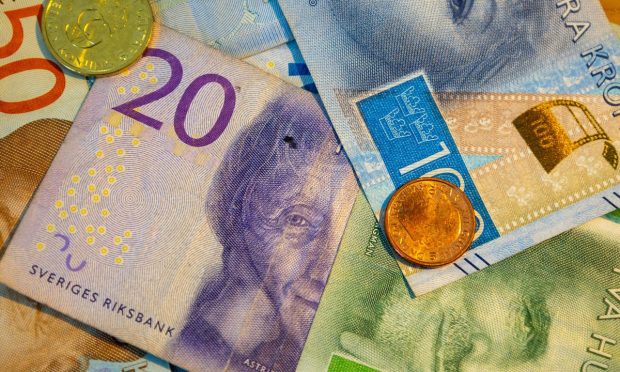Cash Holds Firm in Europe Despite Dwindling Hard Currency Supply

For many people riding the digital wave, cash might already be a thing of the past.
In many parts of Europe, for example, consumer preferences for card and mobile wallet payments have far surpassed physical notes, especially in the north of the continent.
In a recent PYMNTS report examining the ways people use and are impacted by digital technologies, respondents in France, the Netherlands and the U.K. — three of the six European countries surveyed — reported using cash or check in just 12.6%, 18.1% and 19.1% of in-store transactions, respectively.
Read the PYMNTS report: Benchmarking the Digital Transformation
And in the case of the Nordic countries, often regarded as global leaders in digital payments and innovation, those numbers are even lower.
According to a report by the Swedish Central Bank, the number of people who reported using cash as their most recent payment method fell from 39% to 9% between 2010 and 2020.
Swedes’ growing preference for cashless payments can also be observed in the country’s uptake of the Swish mobile payment system, used by 95% of all Swedish adults. As the company’s CEO, Urban Höglund, told PYMNTS, “Today, it’s become an infrastructure in Sweden.”
Watch Swish CEO Interview: Nordic Consumers Demand Local Merchants Improve Mobile Commerce Experience
But while the move toward a post-physical monetary system might be the expected trajectory a country would take in its development, countries like Sweden that have tried to eliminate cash from everyday commerce are realizing that it can be a challenge to get consumers to let go of deeply ingrained habits.
Preventing ‘Cashlessness’ in Sweden
In 2020, the Swedish government stepped in to ensure the country still had an adequate system for cash distribution when cash usage dropped to an alarming low, passing a law intended to protect people’s access to cash services.
That law became necessary after banks started to withdraw ATMs from service and closed deposit-taking branches up and down the country, an issue that first hit the national political agenda following a movement by rural groups and consumer associations known as the Kontantupproret, literally translated as “Cash Uprising.”
The Kontantupproret emerged in 2015 in response to Sweden’s rapidly disappearing cash services, which left many people traveling miles to deposit or withdraw cash.
See also: Is Sweden Proof There Is Such A Thing As Too Much Digital Payment Success?
The Kontantupproret website highlights some of the difficulties that Sweden’s more isolated communities face in accessing cash services, particularly in the country’s arctic regions, where unreliable internet coverage entrenches the importance of the cash system.
The group’s website details one case of a man with Asperger’s syndrome who reported having trouble saving and managing his finances without the tangible aspect of physical money. When he did want to deposit his saved-up cash, he had to travel from Norrköping to Stockholm — a nearly two-hour drive.
As a result of the government’s move, today, banks holding more than 70 billion SEK ($6.61 billion) in deposits are mandated to offer cash services across the Scandinavian country or risk being fined by Sweden’s financial supervisory authority.
Smooth Transition to Cashless?
Sweden is not alone when it comes to challenges involved in transitioning to a cashless economy. In Germany, one of Europe’s most developed economies, cash is still king.
As PYMNTS reported, per the German Association of Money and Bond Services, cash accounts for 75% of all retail transactions in the country, with the average German carrying about €107 in their wallet and more than €1,360 in bank safe deposit boxes.
Read more: In Germany, Cold Hard Cash Still the Way to Pay
Even though cash usage as a percentage of transactions has declined across the region, particularly in the wake of the pandemic, other regulators may soon follow Sweden’s lead in taking a proactive stance to ensure that banks are meeting the needs of cash-dependent customers.
In the Netherlands, one option being discussed is public funding for the cash supply, Gijs Boudewijn, general manager at the Dutch Payments Association (DPA), told PYMNTS in a recent interview.
Related: Benchmarking the EU’s Digital Engagement: the Netherlands
He said the DPA was in discussions with relevant stakeholders over how best to ensure that cash is “available for those who really, really need it whilst at the same time minimizing the cost of the remaining cash infrastructure.”
See also: Dutch Payments Association GM Says ‘Positive Friction’ Will Protect BNPL Users
So, while major trends point toward a cashless future in Europe, the preferences of cash-heavy consumers should be considered to ensure a smooth transition away from physical currency.
For all PYMNTS EMEA coverage, subscribe to the daily EMEA Newsletter.
